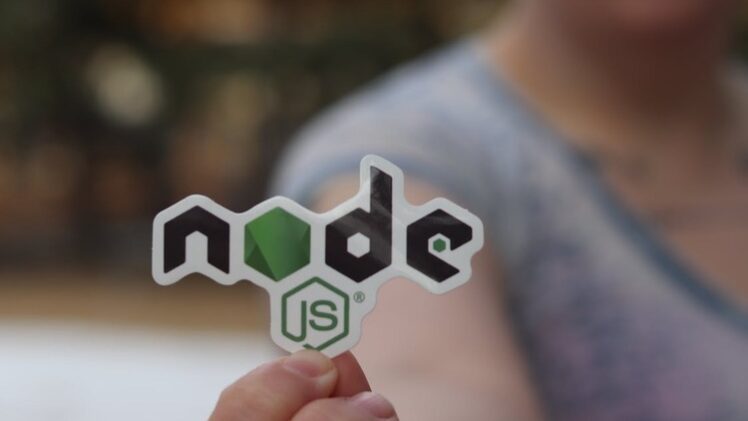Are you looking to integrate a chatbot into your website or application? OpenAI’s ChatGPT API offers a powerful solution for creating conversational interfaces. In this article, we will show you how to use the ChatGPT API in Node.js, step by step.
1. Introduction to ChatGPT API
ChatGPT is a state-of-the-art language model developed by OpenAI, capable of generating human-like responses to text-based prompts. The ChatGPT API allows developers to integrate the model into their applications, enabling natural language interactions between users and software.
2. Prerequisites for using ChatGPT API in Node.js
Before we get started, make sure you have the following prerequisites installed:
- Node.js
- NPM
- OpenAI API Key
3. Setting up a ChatGPT API key
To use the ChatGPT API, you need to create an OpenAI account and obtain an API key. Follow the steps below to set up your API key:
- Go to the OpenAI API website and create an account.
- Once you have created an account, navigate to the API Keys tab and click on the “Create API Key” button.
- Give your API key a name and select the permissions you require.
- Click on the “Create API Key” button to generate your key.
4. Installing the OpenAI Node.js package
With your API key in hand, you can now install the OpenAI Node.js package by running the following command in your terminal:
npm install openai
This will install the package and its dependencies in your project.
5. Creating a basic Chatbot with ChatGPT API
Let’s create a basic Chatbot that responds to user input using the ChatGPT API. First, we need to import the OpenAI package and initialize it with our API key:
const openai = require(‘openai’);
openai.apiKey = process.env.OPENAI_API_KEY;
Next, we can create a function that sends a prompt to the ChatGPT API and retrieves a response:
async function getResponse(prompt) {
const completions = await openai.completions.create({
engine: ‘text-davinci-002’,
prompt: prompt,
maxTokens: 1024,
n: 1,
stop: [‘\n’]
});
const message = completions.choices[0].text.trim();
return message;
}
In this example, we are using the text-davinci-002 language model and setting the maximum number of tokens to 1024. We are also telling the model to stop generating text at the first newline character.
Finally, we can create a loop that prompts the user for input and calls the getResponse function to generate a response:
const readline = require(‘readline’);
const rl = readline.createInterface({
input: process.stdin,
output: process.stdout
});
(async function() {
while rl.question(‘You: ‘, async (input) => {
const response = await getResponse(input);
console.log(`Bot: ${response}`);
loop();
});
})();
Now, run the code in your terminal by typing node index.js (assuming you saved your code in a file called index.js). You should see a prompt asking for input. Type in a sentence or a question, and the Chatbot should generate a response.
6. Handling User Input
To make the Chatbot more intelligent, we can use context to generate more relevant responses. In order to do this, we need to store the conversation history between the user and the Chatbot.
let history = [];
async function getResponse(prompt) {
const completions = await openai.completions.create({
engine: ‘text-davinci-002’,
prompt: prompt,
maxTokens: 1024,
n: 1,
stop: [‘\n’],
context: history
});
const message = completions.choices[0].text.trim();
history.push(message);
return message;
}
In this example, we are passing the history array as context to the ChatGPT API. This allows the model to generate responses based on the previous conversation history.
7. Customizing the Chatbot’s responses
The ChatGPT API allows us to customize the model’s responses by providing additional parameters. For example, we can use the temperature parameter to control the creativity of the model’s responses.
async function getResponse(prompt) {
const completions = await openai.completions.create({
engine: ‘text-davinci-002’,
prompt: prompt,
maxTokens: 1024,
n: 1,
stop: [‘\n’],
context: history,
temperature: 0.5
});
const message = completions.choices[0].text.trim();
history.push(message);
return message;
}
In this example, we are setting the temperature to 0.5, which means the model will generate more diverse and creative responses.
8. Testing the Chatbot
Now that we have created a basic Chatbot, it’s time to test it with some real-world scenarios. Try asking the Chatbot some questions related to your business or industry. If the responses are not satisfactory, you can always customize the Chatbot’s behavior by changing the parameters.
9. Deploying the Chatbot to a Web Application
To deploy the Chatbot to a web application, you can use a Node.js web framework like Express.js. Here’s an example code snippet:
const express = require(‘express’);
const app = express();
app.use(express.json());
app.post(‘/chat’, async (req, res) => {
const input = req.body.input;
const response = await getResponse(input);
res.json({ response: response });
});
app.listen(3000, () => {
console.log(‘Chatbot running on port 3000’);
});
In this example, we are creating a simple HTTP server that listens on port 3000. Whenever a POST request is made to the /chat endpoint, the server will generate a response using the Chatbot’s getResponse function and send it back to the client.
10. Security Considerations
When using the ChatGPT API, it’s important to prioritize security to protect your users’ privacy. Here are some key security considerations to keep in mind:
Encrypt User Input and Output
To ensure the confidentiality and integrity of user data, it is recommended to encrypt the user input and output when communicating with the ChatGPT API. This can be achieved by using secure communication protocols such as HTTPS/TLS.
Securely Store API Key
Your API key grants access to the ChatGPT API, so it’s crucial to store it securely. Avoid hardcoding the API key directly in your code or storing it in a publicly accessible location. Instead, consider using environment variables or a secure configuration file outside of your codebase.
Implement User Authentication and Authorization
If your application requires user-specific interactions with the Chatbot, consider implementing proper user authentication and authorization mechanisms. This ensures that only authorized users can access and interact with the Chatbot, protecting sensitive user data.
Handle Sensitive Information with Care
Be cautious when dealing with sensitive information within the conversation history or user prompts. Avoid sending sensitive data such as personally identifiable information (PII), financial details, or any other confidential information to the ChatGPT API. Filter or redact such information before sending prompts to maintain user privacy.
Regularly Update and Patch Dependencies
Keep your Node.js dependencies, including the OpenAI package, up to date with the latest security patches. Regularly check for updates and apply them promptly to mitigate any potential security vulnerabilities.
Monitor and Log API Usage
Implement robust logging and monitoring mechanisms to keep track of API usage. This allows you to identify any unusual or suspicious activities and respond proactively to potential security incidents.
By following these security best practices, you can enhance the security posture of your Chatbot application and ensure the privacy and protection of your users’ data.
11. Conclusion
In this article, we learned how to use OpenAI’s ChatGPT API in Node.js to create a basic Chatbot. We covered the basics of API authentication, creating a prompt, and generating a response. We also discussed how to customize the Chatbot’s behavior by providing additional parameters, and how to deploy the Chatbot to a web application.
With the power of the ChatGPT API, you can create intelligent Chatbots that can understand natural language and provide relevant responses to your users. Whether you’re building a customer support Chatbot or a virtual assistant, the ChatGPT API can help you provide a better user experience.
12. FAQs
1. What is OpenAI’s ChatGPT API?
OpenAI’s ChatGPT API is a natural language processing API that allows developers to create intelligent Chatbots that can understand and respond to natural language inputs.
2. How do I authenticate with the ChatGPT API?
To authenticate with the ChatGPT API, you need to create an API key and set it as an environment variable in your Node.js application.
3. How do I generate a response from the ChatGPT API?
To generate a response from the ChatGPT API, you need to create a prompt that provides context for the model. You can then pass the prompt to the API and receive a response.
4. Can I customize the Chatbot’s responses?
Yes, you can customize the Chatbot’s responses by providing additional parameters like temperature and max_tokens.
5. How can I deploy the Chatbot to a web application?
To deploy the Chatbot to a web application, you can use a Node.js web framework like Express.js. You can then create an HTTP endpoint that generates responses using the ChatGPT API.


